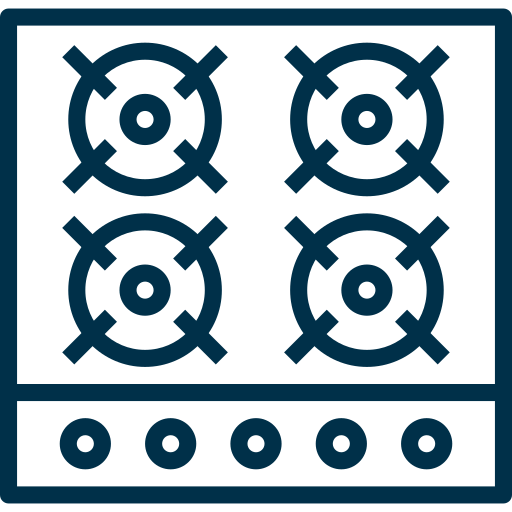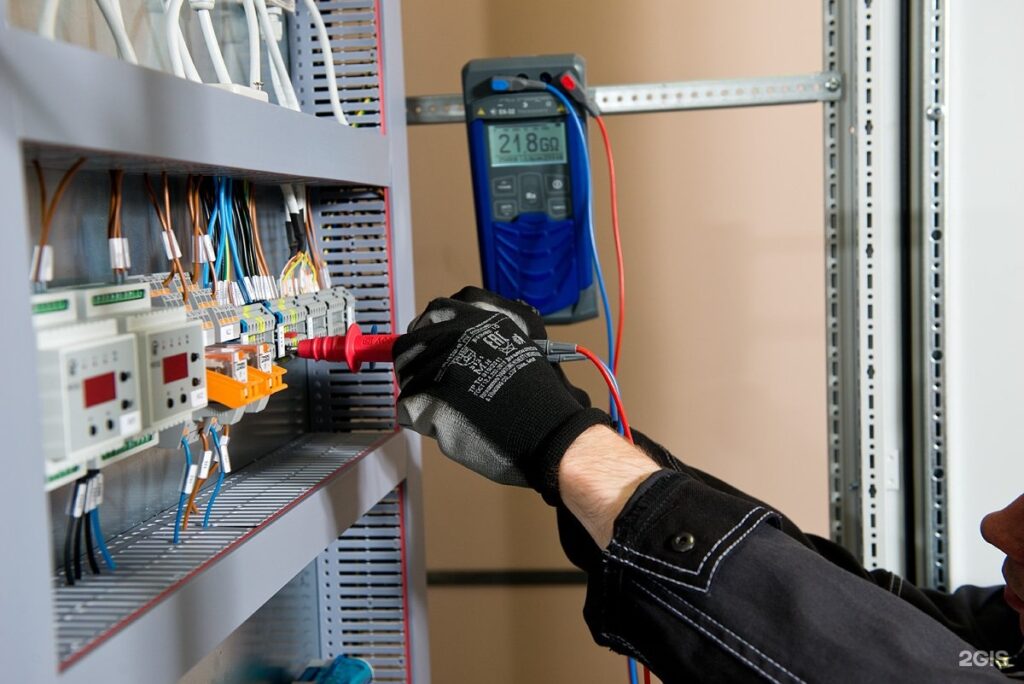Fuse Box Installation
Start from £475
All inclusive (No hidden Cost)
If you want More than 5 Bedrooms you can make your booking by clicking on the button below:
Fuse Box Installation in UK
The fuse box serves as the central hub of your home’s electrical system, housing all the connection points for various circuits. It typically includes fuses rated for specific amperages based on the load required for each circuit. Both the fuse box and the consumer unit distribute electricity throughout the building via multiple circuits and automatically cut off power if an overload occurs in any of them. This event, where the power is switched off due to overload, is known as tripping.

Consultation: Our team will visit your home to evaluate your current electrical system and recommend the most suitable fuse box for your needs.

Planning: We’ll develop a comprehensive installation plan, carefully ensuring all necessary permits and approvals are secured for a successful project.

Disconnection: Our qualified technicians will safely disconnect the power supply to your old fuse box before starting the installation.

Installation: Skilled technicians will expertly install your new fuse box, ensuring the entire process is precise and efficient for optimal performance.

Testing and Cleanup: We’ll thoroughly test the new fuse box for proper function and leave your home clean and tidy after the installation.
NICEIC-Approved Electrician
If you’re looking for a professional and NICEIC certified electrician to install your fuse box, look no further than Landlord Certificate London. We’re here to help you get the job done right, and we’ll make sure that everything is installed properly and safely.
We’re also available 24/7 for any emergencies that may arise. Give us a call today to get started!



Do You Want To Book Multiple Services?
Our Services Include

Secure Installation
Our fuse box installation service includes setting up a device that houses fuses or circuit breakers to safeguard a building’s electrical circuits. This process typically involves connecting the main power supply to the fuse box, installing fuses or breakers for each circuit, and linking the circuits to their respective outlets or fixtures.

Certified Electricians
In the UK, all electrical work must be certified and reported to local building control. Thus, installing a fuse box in London should be done by a qualified electrician. Older buildings may have fuse boxes that don’t meet current regulations and may need upgrades. We can assess your needs and provide solutions.
What is a Consumer Unit?
A consumer unit, commonly referred to as a fuse box or distribution board, serves as the central electrical control panel in a household, managing and distributing electrical power throughout the home. It houses circuit breakers or fuses designed to protect electrical circuits from overloads or short circuits, automatically interrupting the supply when faults are detected, thus preventing hazards like electrical fires.
When electrical issues arise, the consumer unit should be the first point of inspection, as homeowners can check for tripped circuit breakers or blown fuses, indicating a problem that needs addressing. In the UK, consumer units must comply with specific government regulations and standards, such as the IET Wiring Regulations (BS 7671), to ensure safety and reliability. Regular inspections by qualified electricians are recommended to maintain optimal performance and safety, helping to identify any potential weaknesses or outdated components in the system before they lead to significant issues. This proactive approach not only enhances safety but also contributes to the overall efficiency of a home’s electrical system.

Some of the requirements that consumer units must fulfill include:
- Constructed from non-combustible materials.
- Possessing a minimum IP rating of IP2X.
- Capable of withstanding a voltage of 1,000 volts.
Consumer units must also include specific safety features, such as:
- A main switch that cuts off all live conductors.
- Residual current devices (RCDs) that safeguard against electric shocks.
- Overcurrent protection devices (OCPDs) that prevent fire hazards.
What is a dual RCD-protected consumer unit?
A dual RCD-protected consumer unit is an electrical consumer unit featuring two residual current devices (RCDs) for enhanced protection against electrical shocks and fires, making it suitable for both homes and businesses. RCDs are designed to detect any current flowing to the earth; if a fault occurs in an electrical circuit, the RCD will trip and cut off the power supply. The RCD monitors the current flowing in and out of an individual circuit. If the current flow is unequal, indicating a leak in the wiring, it automatically trips the breaker. This added layer of safety makes dual RCD-protected consumer units significantly safer than standard consumer units. By having two RCDs, these units can also help minimize the chances of a complete power loss, as one RCD can protect certain circuits while the other safeguards others, providing greater reliability and peace of mind for users. Overall, dual RCD-protected consumer units are a wise investment for enhanced electrical safety in any property.

How many types of consumer units are available in the market?
There are three types of consumer units available in the UK market:

Standard units
Standard units are the simplest form of consumer units, usually containing a single main fuse or circuit breaker.

Dual RCD units
Dual RCD units feature two main fuses or circuit breakers, offering enhanced protection against electrical faults.

Split load units
Split load units have a main fuse and sub-circuit breaker, allowing isolation of specific areas during electrical faults.
Are metal consumer units required for properties under UK law?
Since Amendment 3 of the 17th Edition Wiring Regulations, metal consumer units have been mandatory for new installations, effective from 1st January 2016. Some landlords are failing electrical safety tests due to outdated consumer units, such as not having a metal or 18th edition unit. However, electricians must use their own judgment when producing an EICR, as risk factors vary.
EICR coding guides provide general direction, but they cannot cover every potential situation. Each property presents unique risks, meaning the electrician’s experience and expertise play a critical role in determining compliance. Ultimately, the safety and suitability of an installation are based on professional assessment, not just strict adherence to guidelines.

Significance of Replacing Fuse Boxes
Replacing fuse boxes in the UK is crucial for improving electrical safety and functionality, as they distribute and protect power in homes or buildings.
Minimizing the Risk of Property Damage
An outdated fuse box poses safety risks by failing to protect against power surges, potentially leading to electrical fires, severe property damage, and even loss of life.
Managing Power Requirements
Older fuse boxes may struggle with modern power demands, causing blown fuses and power outages.
Enhanced Safety
Upgrading to a modern circuit breaker boosts safety, prevents power outages, and handles surges more effectively than fuse boxes, reducing fire risks.
Remove Faulty Electrical Connections
Replacing old fuse boxes is crucial to avoid poor connections and resistance, as modern circuit breakers are built with more durable, corrosion-resistant materials.
To Comply with Current Safety Standards
Upgrading outdated fuse boxes in older homes to modern circuit breaker panels ensures compliance with current safety standards.

Consequences of Not Replacing Fuse Boxes
Keeping an outdated fuse box comes with several drawbacks:
Safety Hazards: Older fuse boxes lack modern safety features, increasing the risk of electrical fires.
Inefficiency: Outdated systems can lead to frequent power outages and inefficiencies.
Limited Capacity: A fuse box may struggle to handle increased electrical demands, causing blown fuses.
Maintenance Challenges: Older models are harder to maintain, complicating problem identification and repair.
Incompatibility with Modern Appliances: Many new appliances require more power than older fuse boxes can provide, risking outages and damage.
Impact on Property Value: Prospective buyers often factor in the condition of the electrical system, making homes with outdated fuse boxes less appealing and potentially lowering sale prices.
How frequently should you replace a fuse box?
Fuse boxes should be regularly inspected and replaced if they are outdated or malfunctioning. The National Electric Code advises that electrical panels be checked every 10 years and replaced if they are over 40 years old. However, if you’re encountering issues like tripped breakers or blown fuses, it may be necessary to have the panel inspected and replaced sooner.

FAQ's
Frequently Asked Questions
Fuse boxes should be inspected regularly, ideally every 10 years, and replaced if they are over 40 years old. If you experience issues like tripped breakers or blown fuses, it may be necessary to have the panel inspected and replaced sooner.
Signs include frequent blown fuses, tripped breakers, flickering lights, or if your fuse box is over 40 years old. If you notice any of these issues, it’s best to have a professional inspect it.
In the UK, there are three types of consumer units:
- Standard units: Basic units with a single main fuse or circuit breaker.
- Dual RCD units: Feature two main fuses or circuit breakers for enhanced safety.
- Split load units: Have a main fuse and sub-circuit breaker for isolating specific areas during faults.
Yes, metal consumer units are mandatory for new installations under UK law since Amendment 3 of the 17th Edition Wiring Regulations, effective from January 1, 2016.
A dual RCD-protected consumer unit contains two residual current devices (RCDs) for added safety against electrical shocks and fires, allowing better protection for various circuits.
Services include secure installation by certified electricians, ensuring compliance with safety standards, and addressing any specific electrical needs your property may have.
The installation involves setting up a device that houses fuses or circuit breakers, connecting the main power supply, installing fuses or breakers for each circuit, and linking circuits to outlets or fixtures.
You can book an installation by calling or clicking the booking button provided on the service website.




